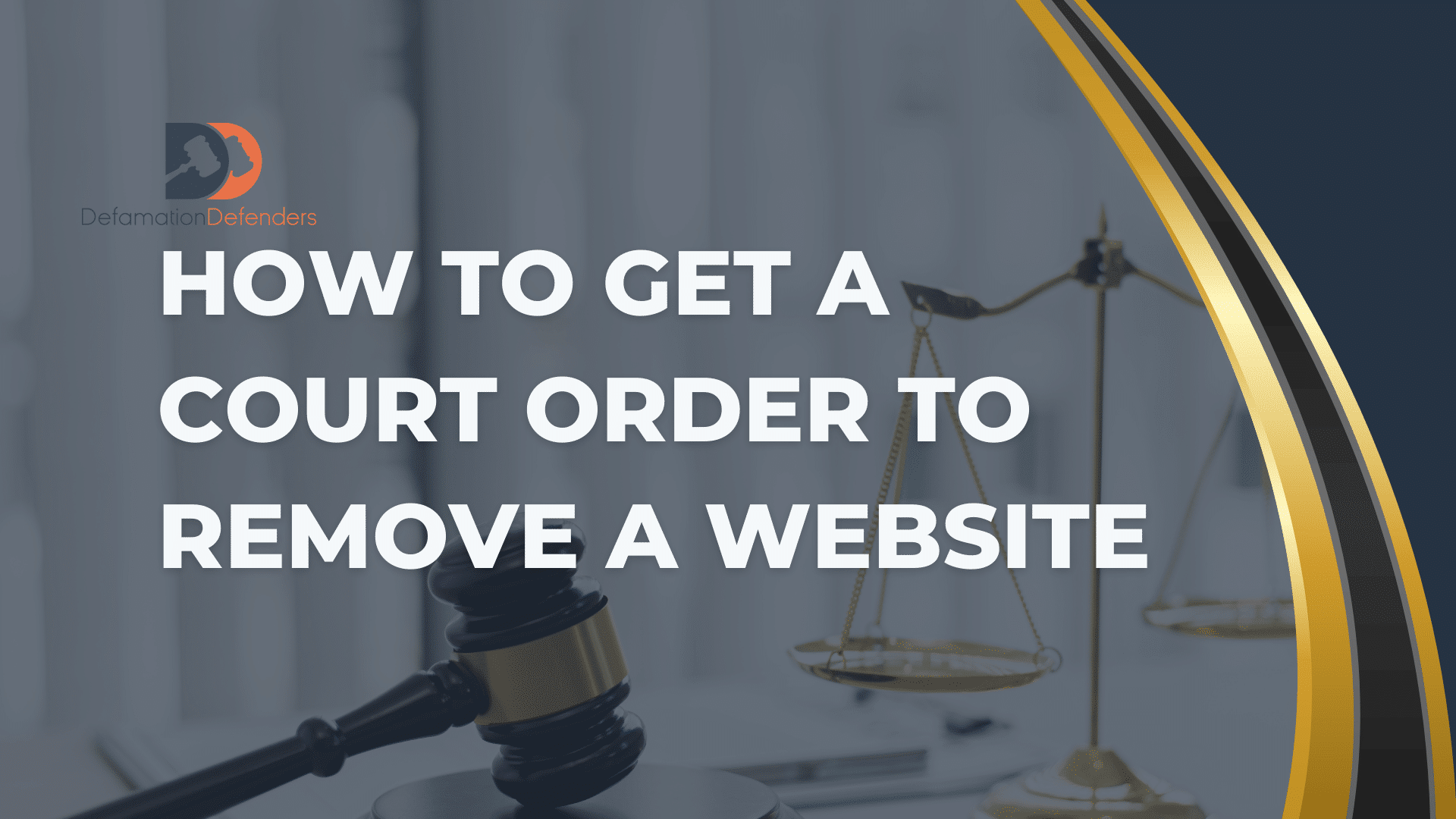Table Of Content
Taking Control of Online Harassment: Steps to Secure a Court Order for Website Removal
Welcome to our blog post on a topic that affects countless individuals: online harassment. In today's digital age, the rise of social media and online platforms has unfortunately given way to an alarming increase in cyberbullying, hate speech, and defamation. But fear not! We believe it's time to take control of this issue by exploring one powerful tool at your disposal: securing a court order for website removal. Join us as we delve into the steps you can take to protect yourself or others from the clutches of online harassment, empowering you with knowledge and tactics to reclaim your peace of mind in this virtual realm. Don't let the trolls win – it's time to fight back together!
Introduction
Taking Control of Online Harassment: Steps to Secure a Court Order for Website Removal
When you are the victim of online harassment, it can feel like there is nowhere to turn. The internet can be a big and scary place, but there are steps you can take to fight back against your harasser. One way to do this is by obtaining a court order for website removal.
This process can be complicated and time-consuming, but it is worth it if it means getting the content that is harassing you taken down. Here are some tips on how to go about securing a court order for website removal:
1. Identify the source of the harassment. This can be tricky, as many times the source will try to remain anonymous. However, there are some things you can look for that may help you identify the source, such as IP addresses or patterns in the language used.
2. Gather evidence of the harassment. This step is important, as you will need to present your evidence to the court in order to obtain a court order. Be sure to save any emails, messages, or other communications that you receive from the harasser. You may also want to take screenshots of any offensive content that is posted online.
3. Contact an attorney specializing in internet law. This step is vital, as an experienced attorney will know how to best navigate the legal system in order to help you get the relief you need.
4. File a lawsuit. To obtain a court order, an open case must be pending in a court. If a person wants to obtain a court order and has not initiated a case, the person needs to file a lawsuit. Then a motion seeking an order must be filed.
What is Online Harassment?
Online harassment is defined as any type of threatening, derogatory, or otherwise harassing behavior directed at an individual or group online. This can include but is not limited to:
-Threatening or degrading comments directed at an individual or group
-Repeatedly sending unwanted messages or communications
-Publishing private or personally identifying information without consent
-Attempting to damage or destroy another person's online reputation or presence
Cyberstalking, doxxing, and swatting are all forms of online harassment that can have serious real-world consequences. Victims of online harassment may experience anxiety, depression, fear, and in extreme cases, suicide.
If you are being harassed online, there are steps you can take to protect yourself and hold your harasser accountable. You can report the harassment to the website or platform where it is taking place, block the harasser, and save any evidence of the harassment. You can also file a police report and get a restraining order if the harassment escalates.
If you want to take legal action against your harasser, you can contact an attorney who specializes in internet law. They can help you determine what type of legal action to take and how best to protect yourself moving forward.
How to Take Legal Action Against Online Harassment?
If you are the victim of online harassment, you may be able to take legal action against the individual responsible. In some cases, the individual may be ordered to remove the offending content from their website or social media platform. In other cases, the court may order the individual to refrain from further harassing behavior.
To take legal action against online harassment, you will need to gather evidence of the harassment. This can include screenshots or copies of abusive comments, emails, or social media posts. You will also need to show that the harassment has caused you distress. Once you have gathered this evidence, you can contact a lawyer to discuss your options.
If you decide to pursue legal action, your lawyer will likely file a complaint with the court. The court will then decide whether to issue an order demanding that the individual remove the offensive content or cease their harassing behavior. If the court decides in your favor, the offender will be required to comply with the order or face penalties, such as fines or jail time.
Taking legal action against online harassment can be complex and time-consuming. However, it may be necessary if you wish to stop the abuse and hold the offender accountable for their actions.
Steps to Secure a Court Order for Website Removal
The internet can be a tough place. You can be minding your own business, when suddenly you find yourself the victim of online harassment. This can take many forms, from someone posting threatening or defamatory comments about you on social media, to an entire website being dedicated to harassing you.
If you find yourself the victim of online harassment, there are steps you can take to try and remove the content and get a court order for website removal. Here’s what you need to do:
1. Identify the content that is causing you distress. This can be anything from a single post on social media to an entire website. Make sure to save any evidence of the harassment, as this will be important later on.
2. Contact the site owner or administrator and request that the content be removed. If you know who is behind the harassment, you can also contact them directly and request that they stop.
3. If the content is not removed, or if you don’t know who is responsible for it, you can file a complaint with your local law enforcement or with the FBI’s Internet Crime Complaint Center (IC3).
4. Once you have filed a complaint, an investigation will be launched and if there is enough evidence, law enforcement may contact the site owner/administrator and request that the content be removed voluntarily. If they refuse, law enforcement may seek a court order requiring the site to take down
Overview of the Process Involved
Assuming you are in the United States, the process for securing a court order for website removal can be summarized into a few key steps:
- File a lawsuit against the individual or entity responsible for the online harassment.
- Serve the individual or entity with the lawsuit and give them an opportunity to respond.
- Go before a judge and request a restraining order or preliminary injunction that orders the individual or entity to take down the offending material.
- If necessary, file a motion for contempt against the individual or entity if they do not comply with the court order.
Tips and Tricks for Successful Website Removal
If you are the target of online harassment, there are steps you can take to secure a court order for website removal.
- First, identify the harassing content and document everything. This will be helpful in court.
- Then, send a cease and desist letter to the website owner or administrator.
- If the harassment continues, you can then file a lawsuit. In your lawsuit, you will need to show that the content is defamatory, invades your privacy, or is otherwise actionable.
- Once you have a court order, the website must remove the offending content. If they do not comply, they may be held in contempt of court.
If you are the target of online harassment, there are steps you can take to secure a court order for website removal. First, identify the harassing content and document everything. This will be helpful in court. Then, send a cease and desist letter to the website owner or administrator. If the harassment continues, you can then file a lawsuit. In your lawsuit, you will need to show that the content is defamatory, invades your privacy, or is otherwise actionable. Once you have a court order, the website must remove the offending content. If they do not comply, they may be held in contempt of court.
Conclusion
In conclusion, online harassment can have serious consequences and it is important to take action against those who are committing such acts. By taking the right steps, you can secure a court order for website removal, which will help protect your privacy as well as your safety. This article has provided an overview of how to go about getting a court order for website removal so that you can take control of online harassment and get the justice you deserve.



